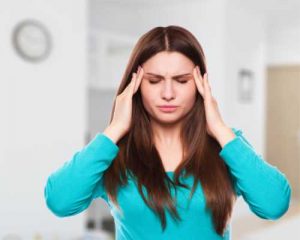
Orthostatic hypotension (OH) is a condition characterized by low blood pressure when you stand up. It may be accompanied by feelings of dizziness or lightheadedness. OH is often minor, lasting for a few seconds or minutes, but long-lasting OH can be a sign of a more serious problem.
Recent findings suggest that dizziness after three minutes of standing can lead to delayed orthostatic hypotension, which is a serious condition that requires attention.
Dizziness after standing may lead to increased risk of death: Study
Orthostatic hypotension is fairly new. The term was introduced only 20 years ago. OH is a drop in blood pressure after standing for as little as three minutes. Researchers from Harvard Medical School reviewed medical records of 165 people who completed nervous system testing – the average age was 59. Of the group, 48 received a diagnosis of delayed orthostatic hypotension, 42 had orthostatic hypotension, and 75 didn’t have either condition. All patients were followed for 10 years.
After the 10-year follow-up, 54 percent who were originally diagnosed with delayed OH progressed to orthostatic hypotension, and 31 percent developed a brain disorder like Parkinson’s disease or dementia.
The death rate for those with delayed OH was 29 percent and 64 percent in those with OH. Those without either condition had a death rate of nine percent. Half of those with delayed OH that progressed to OH died.
The study authors wrote, “These data suggest that delayed orthostatic hypotension is an earlier, milder form of orthostatic hypotension that, with time, will progress to orthostatic hypotension in more than half of the patients and carries a similar poor prognosis.” Early diagnosis is essential to prolong individual lives.
Factors that increase the risk of orthostatic hypotension
The primary cause of orthostatic hypotension is a drop in blood pressure when moving into an upright position. When we stand, gravity causes pooling of blood within our legs, which takes the blood away from our heart. Spinal cells typically sense this change, so they send a signal to the brain to increase the heart rate and boost circulation.
In the case of OH, this signal is interrupted, so the body does not counteract the low blood pressure. Other causes of orthostatic hypotension are:
- Dehydration
- Heart problems
- Endocrine problems
- Nervous system disorders
- Post-meal
Signs and symptoms of orthostatic hypotension
Signs and symptoms of orthostatic hypotension include feeling lightheaded or dizzy when standing up, temporary blurry vision, weakness, fainting, confusion, and nausea.
Self-help for orthostatic hypotension
Symptoms of orthostatic hypotension include dizziness, blurred vision, lightheadedness, mental confusion, nausea, muscle tremors, and fainting. This can be a dangerous condition because it can increase a person’s risk of injury. This can be even worse if a senior is living alone and the dizziness or blurry vision leads to injury.
Here are a few self-help suggestions if you experience any symptoms of orthostatic hypotension.
- Prop your head up with pillows while in bed.
- Get up slowly when in a seated or lying down position.
- Wear support stockings to minimize pooling of blood in legs.
- Eat small, frequent meals to reduce spikes and drops in blood pressure.
- Drink plenty of fluids.
- Limit alcohol consumption.
- Drink small, but regular doses of caffeine.
- Avoid vigorous exercise, hot baths, saunas, and any contact with extreme heat.
- Avoid standing without moving for long periods of time.
- Avoid ascending quickly in high altitudes.
- Check your blood pressure regularly.
By following these tips, you can better improve the symptoms associated with orthostatic hypotension. The new findings suggest that it can progress to a serious neurological disease, so don’t hesitate to speak with your doctor about your symptoms.